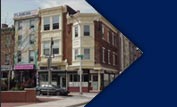- Home
- About
- News
- Tax Reform
- Ethics Reform
- Budget Reform
- Reformer’s Roundtable
- Contact Us







Lame Duck Budget And Lame Budget Excuses
 After making us wait a month to see it, the Mayor presented the most lame of lame-duck budgets to City Council. The plan to raise and spend more than $3.9 billion offers no new initiatives to reduce the alarming murder rate, no new plans to stop our ongoing population loss, and no new ideas to grow jobs in a city where so many lack opportunity. Along with a budget that anticipates overspending revenues by $110 million, the Street Administration again offers its lame excuse of why it may leave the next Mayor with a bare fiscal cupboard. Quoted in a local paper, the Mayor’s Chief of Staff blamed tax cuts — “So you ask why we don't have that nice big ol' cushion to give, that's where it went.” Since there is really very little to say about the actual budget, this is a good time to expose that statement for the untruth it is and to explain a bit about some of the spending decisions that may leave the next Mayor wondering who spent the $300 million surplus that Mayor Street inherited from his predecessor.
After making us wait a month to see it, the Mayor presented the most lame of lame-duck budgets to City Council. The plan to raise and spend more than $3.9 billion offers no new initiatives to reduce the alarming murder rate, no new plans to stop our ongoing population loss, and no new ideas to grow jobs in a city where so many lack opportunity. Along with a budget that anticipates overspending revenues by $110 million, the Street Administration again offers its lame excuse of why it may leave the next Mayor with a bare fiscal cupboard. Quoted in a local paper, the Mayor’s Chief of Staff blamed tax cuts — “So you ask why we don't have that nice big ol' cushion to give, that's where it went.” Since there is really very little to say about the actual budget, this is a good time to expose that statement for the untruth it is and to explain a bit about some of the spending decisions that may leave the next Mayor wondering who spent the $300 million surplus that Mayor Street inherited from his predecessor.
Not many people actually read the Five-Year Financial Plan that the City of Philadelphia prepares annually — and it is clear that the Mayor’s Chief of Staff must have skipped a few pages. If she had done her reading before suggesting that tax cuts have reduced the city’s tax revenues, she would have read that despite the fact that the city has reduced tax rates, the city has in fact increased tax revenues. In fact, the Five-Year Plan details how tax revenues have grown faster than inflation since the city instituted its tax-cut program more than a decade ago. Reducing tax rates has incrementally improved our ability to attract and retain jobs in Philadelphia and that has helped, not hurt, the budget.
So if our tax revenues are not responsible for a declining fund balance, it must be something else. A look at the spending side of the ledger is in order. One need not look far to see the problem.
Whether one believes that the Street Administration’s efforts have been effective or not, the signature initiatives of this mayoralty have definitely been one thing — expensive. Not only have these programs been costly, they have handcuffed future mayors with payments for spending that has occurred in the last seven years.
When the Mayor announced his ambitious Neighborhood Transformation Initiative to remove blight from communities across Philadelphia, administration officials suggested that it would come at little cost to the budget. Officials promoted the idea that the city would take money used to fund demolitions of vacant properties and redirect it to pay debt service on borrowing. The borrowed funds would be used to tear down enough dilapidated properties that the city would avoid future annual spending on demolitions. A look at this year’s proposed budget tells the truth: not only is the city spending about $20 million each year to pay debt service on NTI borrowing, but the city is planning to spend just about what it used to on annual demolitions.
The Mayor’s deal to finance a new stadium for the Eagles and a new ballpark for the Phillies provided the city with two beautiful sports facilities, but those facilities came at a tremendous cost. The city now spends approximately $30 million each year to support the borrowing and other payments associated with the deal.
The Mayor’s latest borrowing deal will have the city spend about $12 million each year to support funding for arts and cultural facilities and business corridors. Despite the good such spending might represent for the institutions that will benefit from it, the $12 million will have to come out of the budget each year for decades.
The Mayor’s bailout of the city’s perennially troubled gas utility was another costly transaction. In 2000, the Street administration loaned the Philadelphia Gas Works $45 million to help the utility through its troubles. But the loan, originally set to be repaid in January 2003, was extended. Few City Hall insiders believe the city will ever recover the “loaned” funds. More significant for the budget, beginning in 2004, the City of Philadelphia released PGW from its legal obligation to pay the city $18 million per year.
The Mayor’s Operation Safe Streets was an aggressive plan to spend police overtime money to place officers in the community to disrupt the drug trade. It was abruptly ended just after the Mayor was re-elected in 2003. Reviews of the effort’s effectiveness are decidedly unimpressive, but the cost of the effort was substantial — more than $80 million.
So we can put to rest the lame excuse that tax cuts have taken money from the city budget. Even the Mayor’s Five-Year Plan demonstrates that tax rates have been reduced but tax revenues have increased. Instead, mayoral spending initiatives loom large in the budget and have cost the city hundreds of millions of dollars in recent years and they will impose a cost of billions in budgets in years to come. That is lame, indeed.
